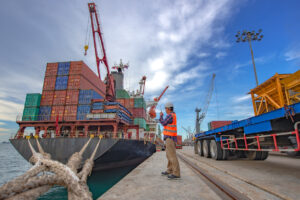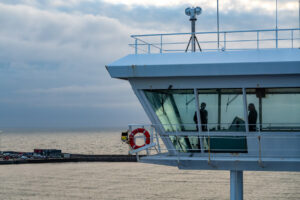Falls from height remain one of the biggest causes of injury and fatalities in the workplace. The distance of the drop need not always be as great as imagined to cause harm. Freight transport liability insurer, TT Club is debunking some common perceptions, offering advice on risk mitigation.
The insurer refers to a ‘seven-step’ checklist to assist operators in perfecting a safer work environment but emphasizes that awareness of the issue and causation is a critical initial approach to the danger.
UK regulations stipulate that ‘working at height’ is defined as any place where, if there were no precautions in place, a person could fall a distance liable to cause personal injury. While in the US it is required that fall protection be provided at elevations of four feet in general industry workplaces, five feet in shipyards, six feet in the construction industry and eight feet in longshoring operations.
Typically, in the international context there is no specific minimum height above which regulations apply and each jurisdiction has its own requirements. Similarly, the need for fall protection equipment varies. Operators across the supply chain therefore need to be familiar with varied local regulations in every location at which they have employees.
“Working at height remains one of the biggest causes of fatality and major injury in the workplace. The common perception is that these relate to falls from ladders or through fragile surfaces, where workers are far from the surface below. This is not always the case,” comments Mike Yarwood, TT’s Managing Director, Loss Prevention.
“It might come as a shock to learn that a man died falling just a meter and a half from within a standard shipping container sited on a road trailer.”
The deceased worker was inside an open top container preparing access for an overhead crane to remove the cargo of steel girders. He fell from the container because the rear doors of the unit were open. Although the company had various generic risk assessments and safe working method statements, it had not put in place simple control measures to prevent or mitigate a fall from the rear of this container. The tragedy could have been averted.
“A court fined the company £200,000 (US$23,600) plus costs,” Yarwood “But the penalty could have been far greater and potentially unlimited. The case highlights a key issue – many haulage firms and warehouse operations may not view work at the back of an open trailer or container on wheels as a ‘working at height’ activity.”
As protecting the workforce must be a priority, TT has summarized a seven-step course of action to help.
- Conduct a working at height risk assessment
- Implement working at height training
- Invest in personal protective equipment (PPE) for working at height
- Complete safety equipment maintenance
- Implement a personal safety system
- Update and review your procedures
- Record everything
“As with all risk mitigation, awareness of the dangers is the primary necessity,” concludes Yarwood. “After that a common-sense approach is the best — where work at height cannot be easily avoided, take action to prevent falls with guard rails etc. Where risk cannot be eliminated, minimize the distance and consequences of a fall and train staff well to make them aware of the dangers.”
Photo credit: iStock/Iam Anupong










